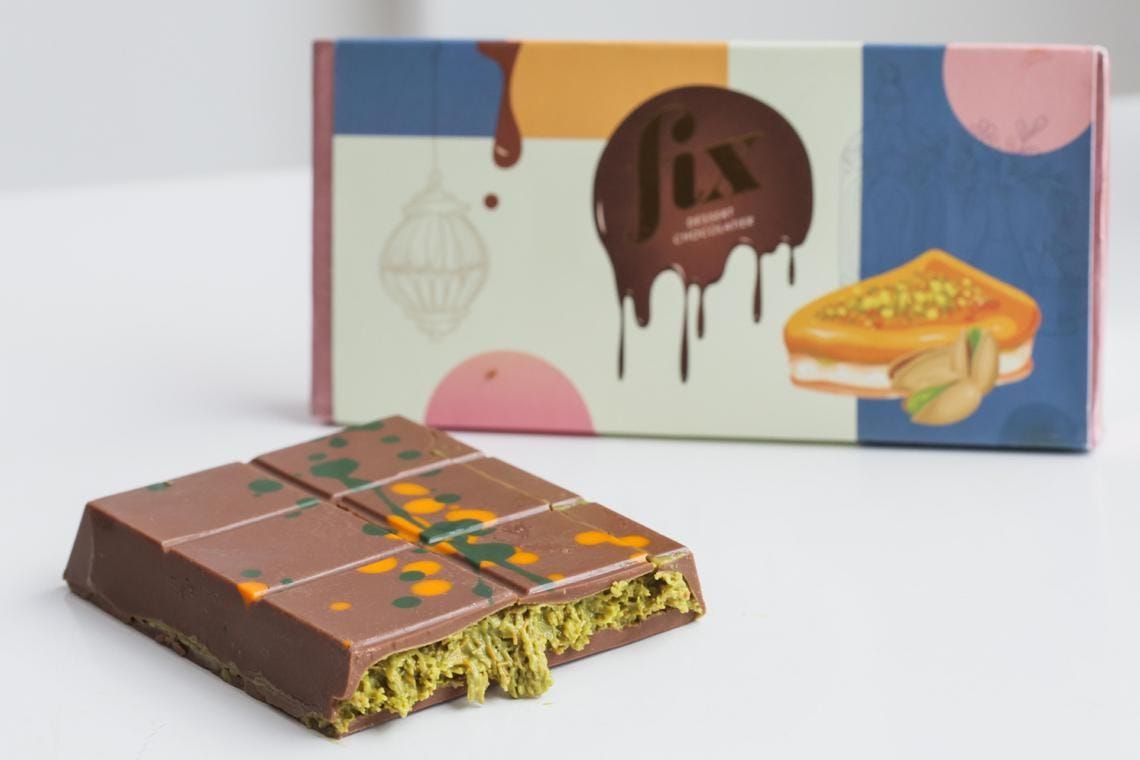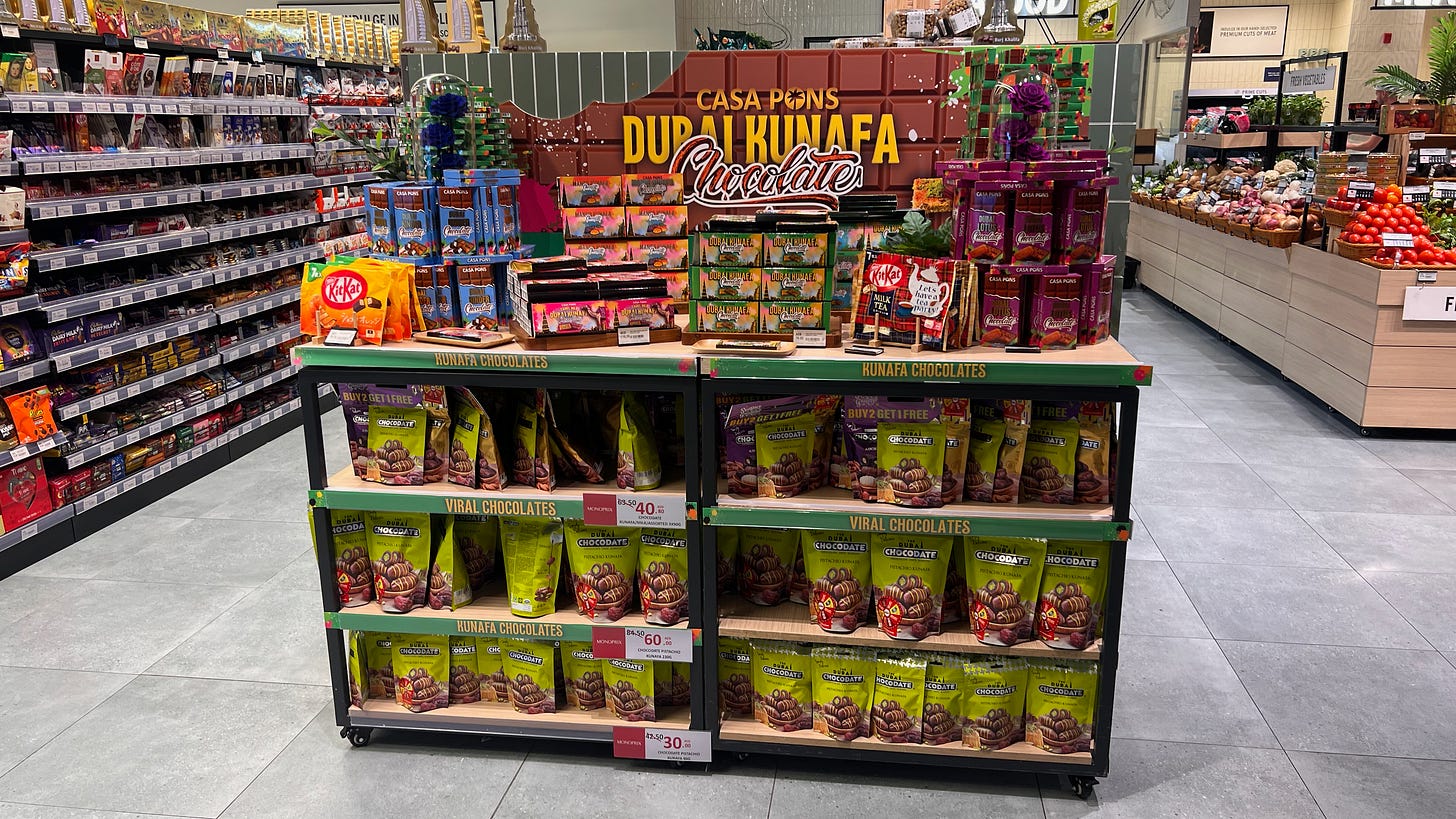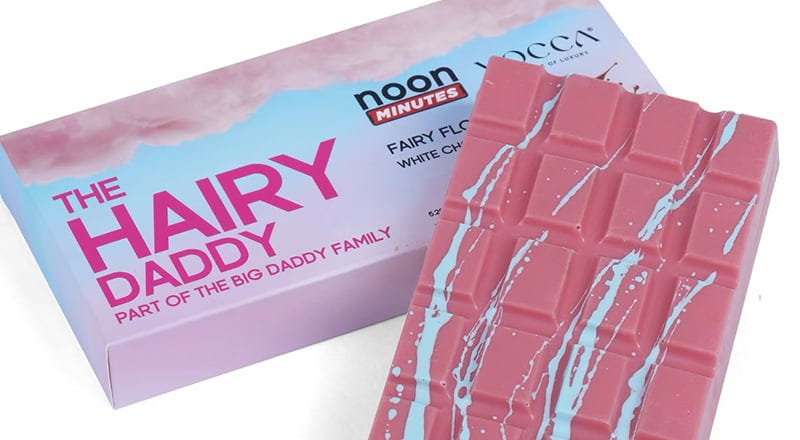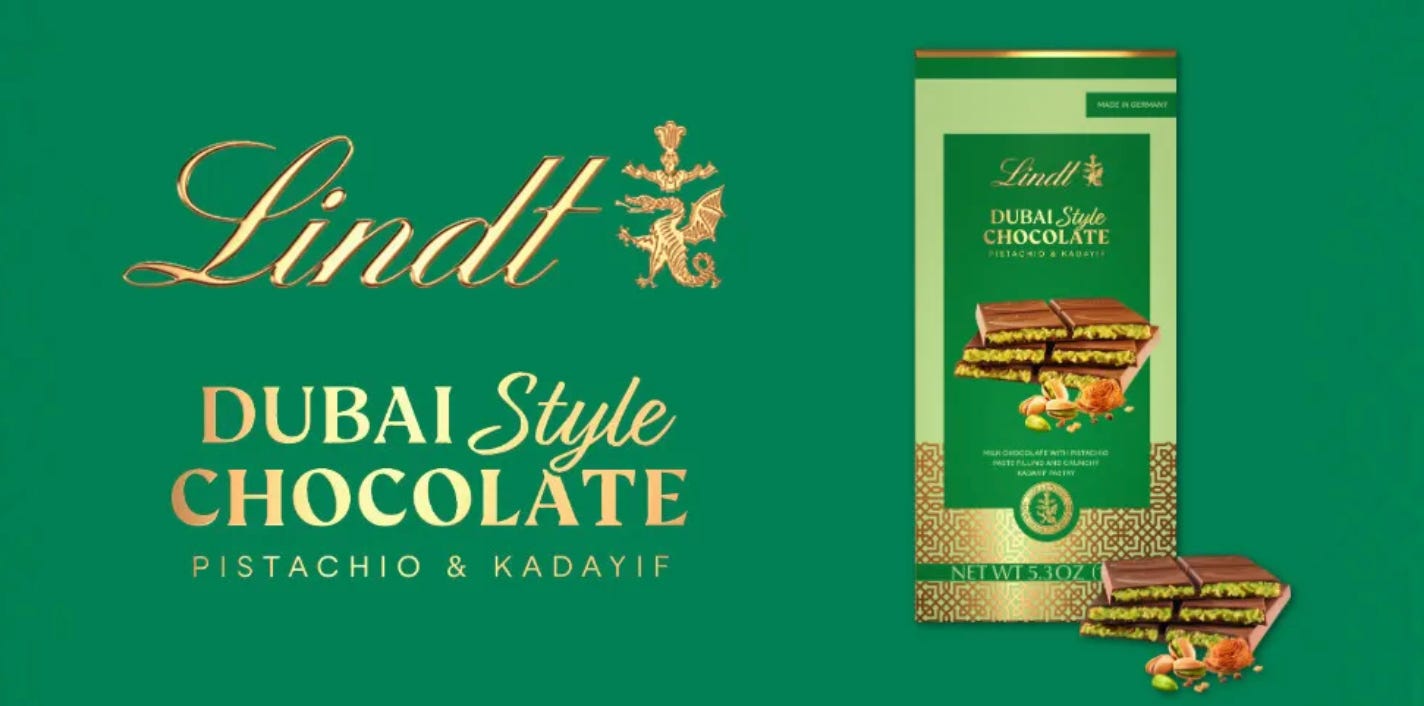'Dubai Chocolate' and the Curious Case of Brandicide
When viral success erases the brand that created it
The world is running out of pistachios because of a chocolate bar that nobody calls by its original name.
Pistachio prices have rocketed from $7.65 to $10.30 per pound in just twelve months1, driven by global mania for what everyone calls "Dubai Chocolate." But here's the fascinating twist: the original creators, Fix Dessert Chocolatier, have been systematically erased from their own success story. Walk into any grocery store in the UAE today and watch tourists hunt for "Dubai Chocolate." Not Fix. Not the product's original name, "Can't Get Knafeh of It." Just the city-branded sensation that TikTok taught them to crave.
What we're witnessing is the birth of an entirely new phenomenon in how brands live and die in the viral age: Brandicide — When going viral becomes the fastest way to kill your own brand identity.
How We Got Here
The story begins like so many modern cultural mysteries: with pregnancy cravings and a 2021 Dubai kitchen. British-Egyptian entrepreneur Sarah Hamouda and Filipino Chef Nouel Catis Omamalin crafted their pistachio-filled, knafeh-textured chocolate bar, lovingly naming it "Can't Get Knafeh of It."2 For two years, it remained Dubai's best-kept secret.
Then December 2023 arrived. Food influencer Maria Vehera shared a single TikTok video sampling the bar.
 Tiktok failed to load.
Tiktok failed to load.Enable 3rd party cookies or use another browser
That clip now has over 120 million views, but its real power lies in what happened next. As the phenomenon exploded globally, consumers did something unprecedented: they branded it themselves. "Dubai Chocolate" emerged not as a marketing decision but as a collective cultural choice—shorthand for Dubai's reputation as a place where excess becomes art.
The renaming spread with surgical precision. "Dubai Chocolate" infiltrated Shake Shack milkshakes and Starbucks secret menus, spawned donuts and cocktails, inspired wedding cakes and ice cream flavors. Each iteration carried the consumer-created name forward while quietly erasing Fix from the story entirely.
Brandicide vs. Genericide: A New Species of Brand Death
We're all familiar with genericide: The slow-motion brand death where your trademark becomes so successful it becomes generic. Kleenex, Uber, even Escalator, all gradually became synonymous with entire categories over decades through patient linguistic drift.
Brandicide operates by completely different rules. It's genericide at viral velocity, but with a crucial twist: instead of your brand name becoming the category, consumers actively reject your brand connection entirely, choosing something they prefer over what you created.
The mechanism is fascinatingly brutal. Social media doesn't just spread your product; it spreads consumer-created naming conventions that can completely override your branding before you've realized what's happening. Consumers become both distributors and editors of cultural meaning, deciding not just whether they like your product, but what they call it.
Unlike traditional genericide, which takes decades and at least leaves you owning the category name, brandicide can happen in weeks and leave you owning nothing but the memory and claim of what you once called your creation.
Frisbee: A Masterclass in Brand Adaptation
While brandicide may seem like an unstoppable force, the evolution of the Frisbee disc shows an alternative path.
Walter Morrison invented what he called the "Pluto Platter" (UFO mania was quite the rage in the 1950s). But college students had other ideas. They'd been tossing pie tins from the Frisbie Pie Company around campus for years, yelling "Frisbie!" as they threw. When Morrison's plastic version appeared, they simply kept calling it a Frisbee.3
Here's where Wham-O showed strategic genius. Instead of fighting the consumer rebellion, they embraced it completely, officially adopting the "Frisbee" name in 1958. But they didn't stop there. They aggressively expanded the category, creating Frisbee Golf, Ultimate Frisbee, and Freestyle Frisbee.4 They turned consumer energy into category domination.
This isn’t a lesson about accepting defeat. It's about recognizing opportunity disguised as disruption. Wham-O's strategic response bought decades of profitable category domination. Of course, "Frisbee" eventually became genericized itself. But by the time that linguistic drift occurred, Wham-O had already extracted enormous value from their consumer-driven rebrand and category expansion strategy.
When consumers rename your product, they're not just rejecting your branding; they're showing you a category waiting to be built.
The Birth of a New Category
What makes the Dubai Chocolate phenomenon particularly intriguing is how it's evolving beyond its pistachio origins. We're witnessing the emergence of what might be called "texture theater" confections designed primarily for social media spectacle rather than traditional taste experiences.
The formula is becoming recognizable: unexpected texture plus Instagram-worthy messiness equals viral potential. VOCCA’s recently launched Hairy Daddy fairy floss bar follows this exact blueprint, suggesting we're seeing the birth of a replicable cultural strategy.5
Meanwhile, chocolate giants like Lindt and Läderach have rushed to launch their own versions, but here's what's fascinating: they're all competing within the "Dubai Chocolate" category framework.6 Instead of trying to establish their own distinct categories, "Swiss Premium Filled Bars" or "Artisanal Pistachio Chocolate," these brands with massive budgets chose to embrace the consumer-created taxonomy. The name has become the dominant market framework that even global brands feel compelled to operate within.
When consumers collectively rename your product, they're not just changing what they call it; they're defining a new market category with specific cultural expectations and experiential requirements.
Brand Building in the TikTok Era
All this reveals something profound about how cultural ownership works in our hyperconnected age. Fix created something remarkable, but the viral velocity of success meant that cultural control slipped away faster than traditional brand strategy could respond.
This isn't necessarily about strategic mistakes—it might simply be the new reality of viral success. When something spreads at TikTok speed, consumers don't just consume; they remix, rename, and redistribute according to their own cultural logic. Traditional brand strategy assumes you can build awareness and maintain ownership simultaneously. But viral culture operates on different principles entirely.
The most successful approach may be to design with this in mind. Create products and experiences that are built to be renamed, remixed, and culturally appropriated. Instead of fighting consumer-driven categories, smart brands can position themselves to define what those categories become.
The Viral Success Trap
This example of brandicide illustrates a profound shift in how viral success operates today. Create something worth copying, and you might be forgotten faster than you went viral. But there's something almost poetic about this. Ideas that achieve true cultural significance often transcend their creators entirely.
Fix didn't just create a chocolate bar; they created a template for viral food innovation, birthed an entirely new category of experiential confectionery, and accidentally wrote the playbook for how consumer culture moves faster than corporate strategy.
Whether brandicide becomes friend or foe depends entirely on how quickly brands can adapt to this new reality. The phenomenon isn't going anywhere. If anything, it's likely to accelerate as social platforms continue to compress the time between creation and cultural adoption.
So stop worrying about how to prevent brandicide. And instead think about how to design for it, leverage it, and maybe even celebrate it as the highest form of cultural compliment: when consumers care enough about what you've created to make it entirely their own.
The Guardian, “TikTok trend for Dubai chocolate causes international shortage of pistachios,” April 2025.
CNN Travel, “The story behind the viral chocolate bar,” June 2024.
History.com, “Toy company Wham-O produces first Frisbees.”
NBC News, “Frisbee still flying high after 50 years,” June 2007.
What's On Dubai, "The Hairy Daddy Candy Floss Chocolate Bar," May 2025,
Lindt USA, "Dubai Style Chocolate,"








